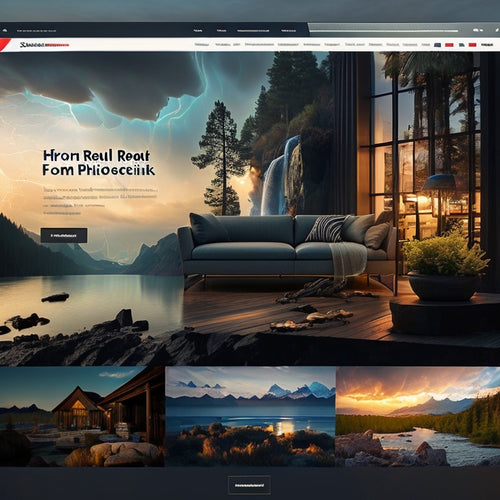
Demand Planner Drives Global Stock and Sales
Share
We drive business success by synchronizing global stock and sales operations, where demand planners play a pivotal role in optimizing inventory levels, streamlining logistics, and fostering supplier relationships to meet customer needs efficiently. By owning the development and maintenance of seasonal demand plans, we guarantee alignment with the rolling demand plan and conduct meticulous data analysis for accurate forecasts. Our collaborative approach with operations, logistics, and suppliers enables seamless communication and decision-making. As we explore the intricacies of demand planning, we uncover the essential skills and strategies required to drive global stock and sales excellence, and how it all comes together.
Key Takeaways
• A Demand Planner develops and maintains a seasonal demand plan, ensuring alignment with the Rolling Demand Plan to drive global stock and sales.
• Accurate forecasts are created through meticulous data analysis, considering market trends and customer behavior to inform inventory planning decisions.
• Strong supplier relationships are nurtured to facilitate seamless communication, efficient decision-making, and optimal inventory management.
• The Demand Planner collaborates with cross-functional teams, including Operations and Logistics, to ensure smooth product launches and optimal stock levels.
• By analyzing sales trends and seasonality, the Demand Planner makes strategic decisions to optimize inventory, reduce waste, and drive global stock and sales growth.
Driving Demand Planning Excellence
As demand planners, we own the development and maintenance of a seasonal demand plan, ensuring it aligns with our Rolling Demand Plan to drive global stock and sales excellence.
Through meticulous data analysis, we create accurate forecasts, updating our Rolling Demand Plan to reflect changes in market trends and customer behavior.
We also nurture strong supplier relationships, ensuring seamless communication and collaboration to meet business objectives.
Our focus is on driving global stock and sales excellence, and we achieve this by producing informative reporting dashboards and internal reports, as well as managing weekly stock, sales, and intake processes.
Collaborative Approach to Success
We foster a collaborative approach to success by working closely with our Operations Manager and logistics teams to guarantee smooth communication and efficient decision-making. This enables us to build strong supplier relationships, which is vital for our global stock and sales operations. We believe that cross-functional collaboration is key to driving results, which is why we work closely with various teams within the organization.
| Team | Collaboration | Benefits |
|---|---|---|
| Operations Manager | Daily meetings | Ensures smooth communication |
| Logistics teams | Regular updates | Guarantees efficient decision-making |
| Cross-functional teams | Seasonal planning | Drives global stock and sales success |
Skills for a Strategic Mindset
Four-plus years of demand planning and inventory planning experience have equipped us with the strong data analytics and Excel skills necessary to drive global stock and sales success. We've honed our skills in strategic decision making, leveraging data analysis to inform our choices.
Our expertise enables us to:
- Develop and maintain complex forecasting models to optimize stock levels.
- Analyze sales trends and seasonality to drive accurate demand planning.
- Create data-driven reports to support business decisions.
- Collaborate with cross-functional teams to align on strategic objectives.
Product Lifecycle Management Essentials
Effective product lifecycle management drives our ability to manage smooth launches for new SKUs and general product lifecycles, ensuring successful product building and upholding the Mercedes F1 brand vision and standards. We achieve this by focusing on inventory optimization, which enables us to maintain best stock levels and reduce waste. Strong supplier relationships are also essential, as they allow us to negotiate better prices and guarantee timely deliveries.
| Product Lifecycle Stage | Key Activities |
| New Product Launch | Collaborate with marketing and trading teams, manage inventory levels |
| Growth Phase | Monitor sales trends, adjust inventory accordingly, and maintain supplier relationships |
| Maturity Phase | Analyze sales data, optimize inventory, and consider product revisions |
| End-of-Life Phase | Plan for product discontinuation, manage remaining stock, and negotiate with suppliers |
A Culture of Innovation
At the heart of our organization lies a culture of innovation, where creativity and experimentation are encouraged to drive growth and excellence. We believe that embracing innovative strategies and embracing calculated risks are crucial to staying ahead in the industry.
Here are a few ways we foster this culture:
-
Employee empowerment: We give our team members the autonomy to explore new ideas and solutions.
-
Collaborative environment: Our open and transparent culture encourages cross-functional collaboration and knowledge sharing.
-
Sustainability initiatives: We prioritize eco-friendly practices and sustainable solutions in our operations and supply chain.
- Continuous learning: We provide training and development opportunities to make sure our team stays up-to-date with the latest trends and technologies.
Frequently Asked Questions
How Often Is the Rolling Demand Plan Updated?
"We update our rolling demand plan regularly, ensuring it's reflective of changing market conditions, as frequent updates minimize inventory discrepancies, allowing us to optimize stock levels and mitigate potential risks, ultimately safeguarding our operations."
What Tools Are Used for Data Analytics and Reporting?
We utilize Excel, predictive modeling tools, and data visualization software to analyze and report on global stock and sales data, ensuring accurate insights and informed decision-making across our organization.
How Does the Demand Planner Manage Conflicting Priorities?
We manage conflicting priorities by prioritizing tasks based on urgency and impact, communicating proactively with stakeholders to set realistic expectations, and leveraging data insights to make informed decisions that mitigate potential conflicts.
Are There Opportunities for Professional Growth and Development?
We prioritize professional growth, pursuing skill development through training, networking opportunities, and leadership training, while also exploring industry certifications to enhance our expertise and stay updated in our field.
What Is the Typical Career Path for a Demand Planner?
"We typically advance from demand planner to senior planner, then inventory manager, leveraging skills development and career advancement opportunities, with salary negotiation and job satisfaction increasing as we climb the corporate ladder."
Related Posts
-
Best Sitemap Builder Shopify Apps for Your Business
This article examines the best sitemap builder Shopify apps available for businesses. It presents an objective analy...
-

Optimizing Shopify Speed: Tips for Faster Performance
This article aims to provide a comprehensive guide for optimizing the speed of Shopify websites. It discusses the bu...
-

What Are Shopify's Competitive Advantages
Shopify, a leading e-commerce platform, possesses a range of competitive advantages that contribute to its prominenc...

